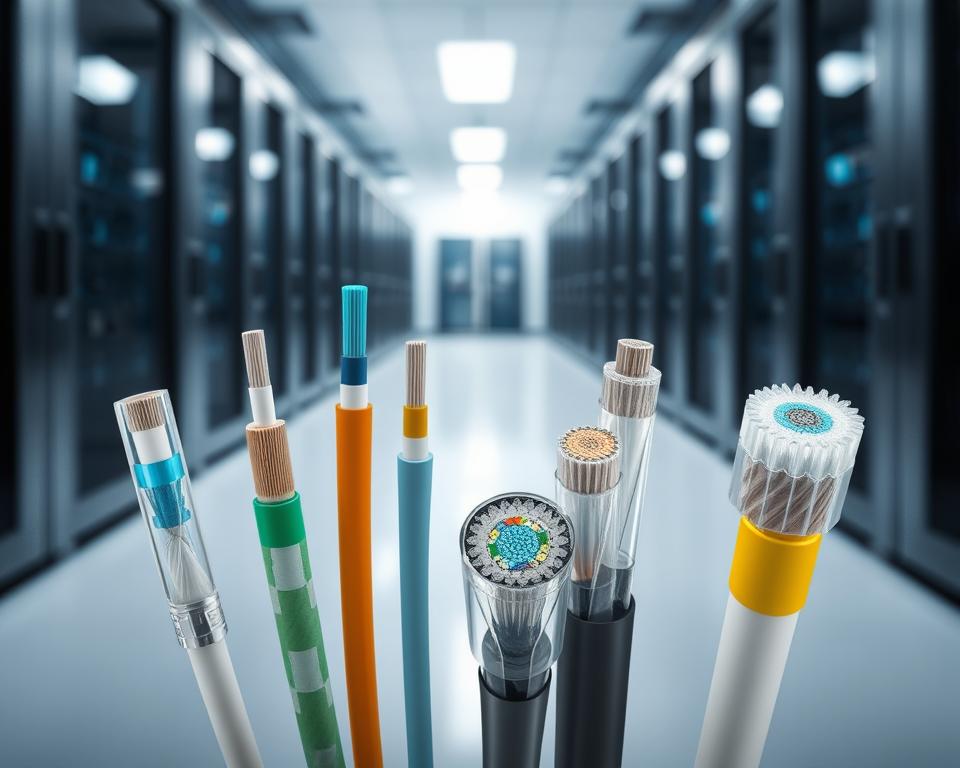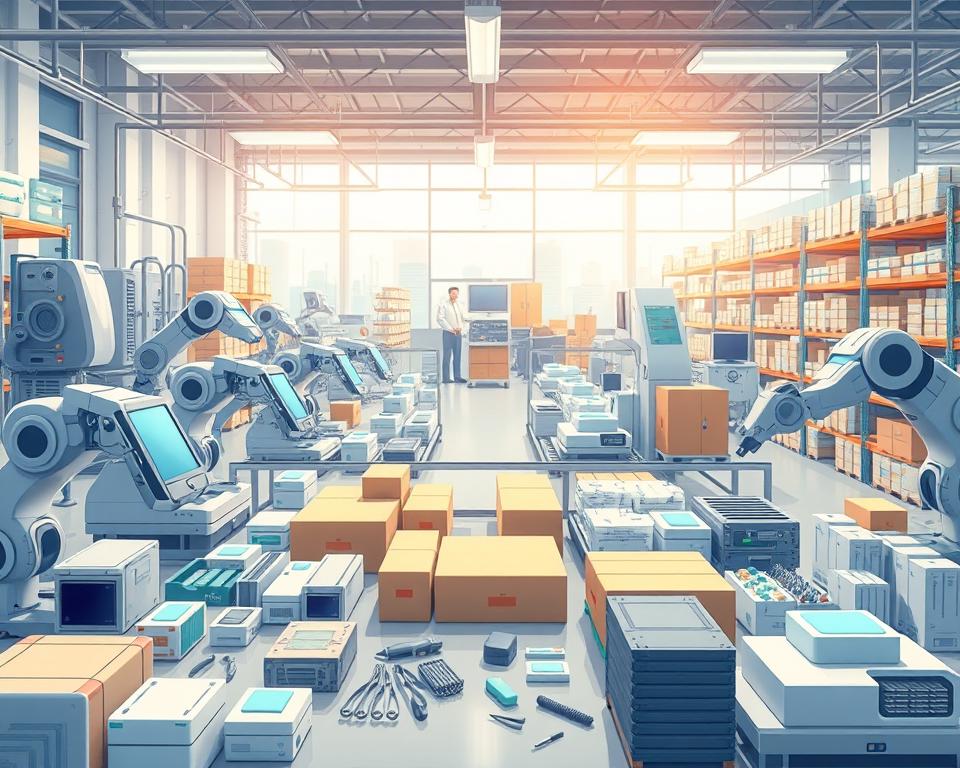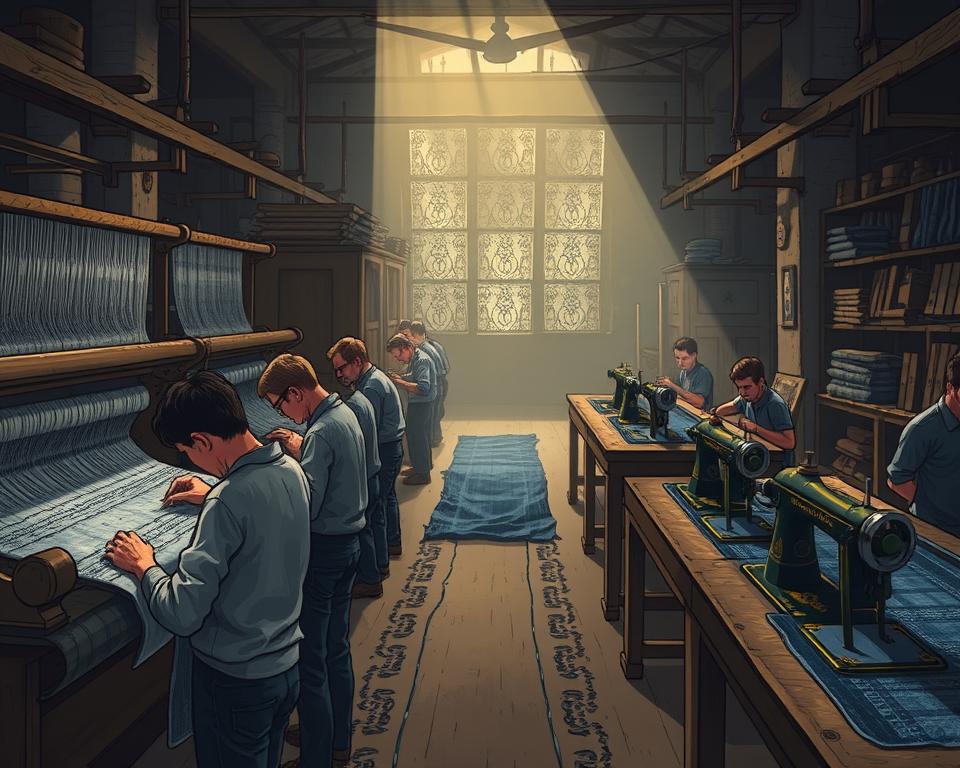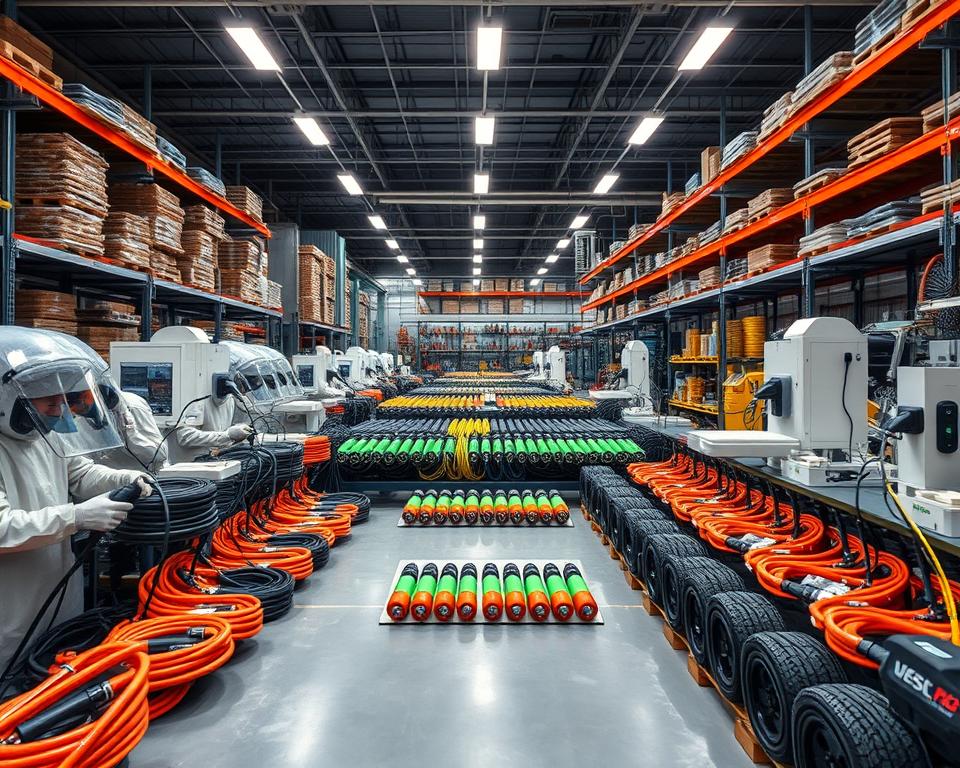The Future of Data Transfer: Fiber Optic Communication Technology
Did you know a single hair-thin strand can now carry over 100 terabits of data per second? That capacity could handle streaming 12 million HD films at once—a leap from the 1950s, when researchers began using light for rudimentary signaling.
- Data speeds a hundredfold greater than legacy copper cables
- Zero interference from power lines or radio signals
- Capacity to support 5G networks and 8K streaming
| Feature | Copper Cables | Fiber Optic Cables |
|---|---|---|
| Data Rate | Up to 10 Gbps | Exceeding 100 Tbps |
| Range | 100 meters | Over 70 km |
| Security | Prone to tapping | Highly resistant to eavesdropping |
Optical signals reflect within glass cores via total internal reflection, similar to a laser light bouncing in a mirrored corridor. This optical principle avoids data loss across vast spans. As video calls and smart devices multiply, these cables keep networks from collapsing under data weight – SZ stranding line.
Evolution of Fiber Optic Communication Technology
Years of research turned the concept of optical data transmission into a working technology. Scientists in the 1950s found glass fibers can channel light—an idea that revolutionized today’s communications.

Early Experiments and Pioneers
In 1952, Narinder Singh Kapany demonstrated that light could propagate through curved glass fibers. He named the field “fiber optics,” establishing the basis for modern fiber networks. Together with Harold Hopkins, he created pliable imaging bundles, which became prototypes for data-carrying fibers.
By the 1960s, laboratory trials showed these fibers had real-world applications. Although initial implementations suffered loss, ongoing experiments improved their efficiency. Researchers found that ultra-purified glass cores extend signal reach with minimal distortion.
Milestones in Fiber Development
In the 1970s, the first commercial deployments revolutionized the industry. Carriers switched from copper to fiber, enhancing call quality and bandwidth. In 1970, Corning Glass Works introduced low-attenuation fiber capable of 65 km spans.
| Year | Milestone | Significance |
|---|---|---|
| 1977 | First live phone traffic | Validated practical dependability |
| 1988 | Launch of TAT-8 transatlantic link | Connected continents |
| 1990s | Erbium-doped amplifiers | Enabled long-distance networks |
Modern advancements focus on speed and scalability. DWDM technology multiplexes many channels on one fiber concurrently. These leaps bridge lab experiments to the backbone of global communication systems.
Fundamentals of Fiber Optic Communication Technology
Light travels faster than anything else—so why not use it to send messages?. This simple idea powers modern networks. Rather than electrons in metal cables, photons traverse geographic barriers. Below is the fundamental mechanism.
Photon-Based vs. Electron-Based Signaling
Light pulses carry information more efficiently than electricity. Photons:
- Move at 186,000 miles per second (99.7% light speed)
- Don’t create heat or electromagnetic interference
- Can carry multiple signals at once using different wavelengths
| Factor | Electrons (Copper) | Photon Signaling (Fiber) |
|---|---|---|
| Speed | Max ~10 Gbps | 100+ Tbps |
| Noise Susceptibility | Vulnerable to electrical noise | Unaffected by EMI |
| Energy Use | Greater energy demand | Low |
The Mirror Effect Inside Glass Strands
Photons remain confined within the fiber’s core by total internal reflection. The core has a higher refractive index than the surrounding cladding. When light hits the boundary at a steep angle, it bounces back like a mirror, staying on course for miles.
Such a design minimizes attenuation. Over extensive spans, nearly 95% of photons arrive intact. Paired with precise lasers, it guarantees clear video conferencing and rapid downloads.
Different Types of Fiber Optic Cables
Fibers come in diverse designs. The right cable type depends on how far your data needs to travel and how much information you’re sending. Let’s break down the two main categories and their specialized designs.
| Feature | SMF | MMF |
|---|---|---|
| Core Size | ~9 microns | ~50–62.5 microns |
| Throughput | 100+ GHz | ~35–500 MHz |
| Maximum Span | 120 miles | 1,600 feet |
| Common Uses | Telecom networks | Data centers |
Hospitals use single-mode for MRI image transfers between buildings. Educational institutions choose multi-mode for intra-campus video streaming on a budget. Each cable category maintains connectivity, tailored to specific needs.
Anatomy of Fiber Optic Cables
Curious how connectivity persists despite storms? The answer lies in the smart design of modern cables. These high-tech threads use multiple layers to protect data while traveling at light speed.
Core, Cladding & Coating Explained
Each fiber’s core is ultra-thin, even narrower than human hair. This pure glass guides photons via total internal reflection. Surrounding it, the cladding layer acts like a mirror, bouncing stray photons back into the core.
An acrylate polymer coating encases the cladding and core. This 250-micron shield prevents scratches and moisture damage. Collectively, these layers create the optical conduit for data.
Armoring and Outer Protection
Real-world durability comes from Kevlar® strands around the coated core. Aramid strands handle pulling forces to avoid fiber breakage. An outer polyethylene jacket completes the package, resisting weather, chemicals, and curious rodents.
| Layer | Substance | Purpose |
|---|---|---|
| Central Glass | Pure silica glass | Light transmission |
| Cladding | Doped silica | Signal containment |
| Coating | Acrylate polymer | Physical protection |
| Outer Sheath | Polyethylene | Environmental shield |
Jacket colors indicate type: orange for multi-mode, yellow for single-mode. Technicians rely on these hues to differentiate fibers for setup or troubleshooting.
Working Principles Behind Data Transmission
How does information travel at light speed without getting lost It involves converting electrical pulses into controlled optical bursts. Flashes map bits (1s) and dark intervals (0s), forming an optical binary stream deciphered by lasers.
Optical Signaling Mechanics
Lasers fire 500 million light pulses per second through glass pathways. By using QAM-16, four bits encode per pulse, multiplying throughput – Fiber cable sheathing line. Such optical signaling is virtually immune to EMI that plagues copper lines.
Handling Signal Dispersion and Attenuation
Two primary issues compromise signal integrity:
- Chromatic dispersion: Various wavelengths travel at dissimilar velocities.
- Modal dispersion: Multiple ray paths diverge in multi-mode fibers.
Modern cables combat these issues through:
| Solution | Effect | Improvement |
|---|---|---|
| Specialized core doping | Equalizes propagation speeds | ~40% reduction in pulse broadening |
| Digital signal processors | Real-time error correction | 99.999% accuracy |
Signal loss drops to 0.15 dB/km in premium cables—a 92% reduction from early designs. Paired with EMI-resistant layers, they preserve signal fidelity worldwide. Consequently, transoceanic calls remain sharp despite severe weather.
Advanced Concepts in Optical Fiber Networking
How do video streams remain stable amid storms? It involves connectors and installation practices that underpin contemporary communications. Such gear guarantees uninterrupted data transfer regionally and globally.
Fiber Termination & Splicing Methods
Network reliability starts with proper connections. SC connectors offer tool-less insertion; LC connectors compress for high-density environments. MPO/MTP designs handle multiple strands at once—perfect for data centers moving massive files.
Splicing primarily uses two approaches:
- Fusion splicing: Joins fiber ends by fusing, achieving minimal insertion loss.
- Mechanical jointing: Uses alignment sleeves for fast, reusable splices.
| Connector | Best For | Insertion Loss |
|---|---|---|
| SC | Commercial infrastructures | ~0.25 dB |
| LC | Dense patch panels | ~0.20 dB |
| MPO | Data center interconnects | ~0.35 dB |
Contemporary Network Architectures
Today’s architectures demand flexible installations. Micro-ducts let technicians blow cables through underground pipes, while armored designs withstand harsh outdoor conditions. In smart cities, fibers weave through traffic lights and security cameras, creating responsive urban networks.
Telecom operators roll out hybrid assemblies, merging electrical and optical conductors. This approach supports 5G towers and IoT devices simultaneously, proving that smart design keeps pace with our connected world.
High-Speed Data Transmission and Bandwidth Benefits
Imagine data as water in pipes: larger pipes yield greater flow. This bandwidth principle underlies the shift to fiber optics. While copper resembles a garden hose, fiber performs like a high-capacity firehose.
- Photons moving at ~186,000 mi/s
- Multiple data streams via wavelength multiplexing
- FEC slashes retransmissions by ~80%
| Time Period | Max Speed | Price per Gigabyte |
|---|---|---|
| 1980s | 45 Mbps | Approximately \$1,200 |
| 2000s | ~10 Gbps | $0.12 |
| 2020s | 178 Tbps | ~\$0.0004 |
Throughput dictates online performance. Videoconferencing needs 5 Mbps per user, while VR demands 50 Mbps. As NEC’s 2023 report shows, networks using glass cables support 40x more users than copper alternatives at half the energy cost.
“Every dollar invested in high-capacity networks yields $3.80 in economic growth through improved productivity.”| “Each \$1 poured into high-bandwidth infrastructure returns \$3.80 in productivity gains.”
Enhanced performance trims OPEX. Signals travel 60 miles without repeaters versus copper’s 3,000-foot limit. Such efficiency powers 8K UHD, live AI tasks, and uninterrupted cloud sync at modest subscription fees.
Overcoming Interference and Signal Loss in Fiber Systems
Have you experienced static-laden calls in storms? Traditional copper lines struggle with such interference. Optical fibers shrug off such noise. These cables use light instead of electricity, making them immune to electromagnetic noise from power lines, radios, or even lightning strikes.
Inherent EMI Immunity
While copper acts as an antenna, fiber is non-conductive. This means they ignore disruptive signals that plague copper networks. Industrial trials in 2023 recorded ~92% fewer errors with fiber vs. legacy copper – Fiber coloring machine.
Mitigation of loss relies on:
- High-purity cores minimize photon scattering
- Precision laser alignment minimizes power waste
- Protective coatings prevent moisture damage
| Factor | CM | Fiber |
|---|---|---|
| Noise Susceptibility | High | None |
| Attenuation per Mile | ~3 dB/mi | 0.2 dB |
| Service Frequency | Monthly checks | ~Yearly reviews |
“Our factory’s error rates dropped 80% after switching to light-based networks—no more machine downtime from radio interference.”| “After switching to fiber, error rates fell by 80%, eliminating downtime from RF noise.”
Fiber excels in harsh environments. Subsea installations withstand saltwater corrosion, while desert networks endure sandstorms without signal degradation. With 99.995% uptime ratings, they’ve become the backbone of mission-critical systems worldwide.
Fiber Optics in Telecommunications and Internet Connectivity
How does your Netflix show arrive instantly from across the globe Fiber networks serve as the neural pathways of today’s Internet. These systems power everything from streaming services to stock market trades, using light to bridge continents.
Long-Distance & Metropolitan Fiber Deployment
Transcontinental cables stretch over 750,000 miles under oceans, carrying 99% of global internet traffic. Urban rings use these fibers to connect cell sites and corporate hubs. Optical transmitters modulate light; receivers demodulate at endpoints.
| Attribute | Copper Networks | Glass-Based Networks |
|---|---|---|
| Throughput | ~1 Gbps | 100 Tbps |
| Latency | 5 ms/km | 0.005 ms/km |
| Reliability | 99.9% | 99.995% |
Application in Data Centers and Cable TV
Data centers rely on these cables for inter-rack communication, moving petabytes daily. Cable networks use hybrid optical/coax infrastructure to stream 4K. Verizon’s 2023 upgrade cut buffering complaints by 73% in urban areas.
Economic incentives accelerate uptake:
- Maintenance costs ~60% lower than copper systems
- Easily scalable for 5G traffic
- 40% energy savings per data unit
From Manhattan’s financial district to Pacific submarine routes, these communication systems prove that speed and reliability can coexist. As one engineer noted: “You can’t beat light for moving mountains of data.”
Next-Generation Fiber Innovations
Imagine networks accommodating 8 billion simultaneous video streams. That’s the promise of next-gen innovations reshaping how we move information. Advanced transceivers and modulation schemes drive network evolution.
Next-Gen Transmitters & Detectors
Modern lasers now fire 200 wavelengths simultaneously—up from just 40 a decade ago. They deliver ~5× the output at ~30% reduced consumption. Paired with graphene-enhanced detectors, they spot faint light signals other devices miss.
Key breakthroughs include:
- Lasers with narrow linewidths cut optical noise by ~90%
- PICs consolidate functions, shrinking component footprints
- Machine-learning calibration optimizes performance in real time
Coherent Transmission and Multiplexing Techniques
Coherent optics modulate both phase and amplitude to encode information. This trick boosts capacity 16-fold compared to older on-off signaling. When combined with wavelength-division multiplexing (WDM), single strands carry 800+ data streams.
| Method | Wavelengths | Speed Gain |
|---|---|---|
| DWDM | ~160 | ~80 Tbps |
| OFDM | ~512 | ~120 Tbps |
| SDM | Multi-core | ~1 Pbps* |
*Experimental (NTT, 2023)
These systems integrate smoothly with existing infrastructure. In 2024, Verizon’s coherent deployment doubled bandwidth on existing fiber routes. As one engineer noted: “We’re teaching old cables new tricks—the best is yet to come.”
Global Standards and Design Considerations
How do international calls remain glitch-free? Universal protocols guarantee seamless interoperability across diverse systems. Without these guidelines, networks would struggle with compatibility issues and performance gaps.
| Standard | Focus Area | Impact |
|---|---|---|
| ITU G.652 | Single-mode fiber | Enables 100Gbps+ speeds |
| IEC 60793-2-50 | Mechanical reliability | Ensures 20-year lifespans |
| ITU G.654 | Undersea fiber | Enhances marine durability |
Testing & Quality Benchmarks
Rigorous validation ensures reliable operations. Primary metrics: attenuation (<0.25 dB/km) and tensile rating (>50 N). Manufacturers run 200+ checks before shipping products, from temperature resistance to bend tolerance.
“Our compliance with IEC 61300-3-35 reduced installation errors by 65% last year.”| “Adhering to IEC 61300-3-35 led to a 65% drop in deployment mistakes.”
Verified components and accurate technical data prevent costly mistakes. Installers use standardized color codes and termination methods, creating seamless connections between equipment from different vendors. This harmony keeps global data flowing without hiccups.
Case Studies: Successful Fiber Optic Implementations
How do cities handle millions of simultaneous video streams without crashing Actual projects illustrate how strategic design and robust fibers sustain our digital ecosystem. Below are two landmark implementations that transformed worldwide networking.
Urban Deployments and Metro Networks
New York City’s Metro Fiber project tackled a major challenge: aging copper lines causing 40% slower speeds in business districts. Engineers installed 800 miles of micro-trenched cables under sidewalks, avoiding subway tunnels and gas lines. The result? Latency dropped from 14ms to 2ms, while download speeds jumped 600%.
| Issue | Approach | Outcome |
|---|---|---|
| Subsoil crowding | 3D GIS route planning | 92% faster installation |
| EMI challenges | Armored MC fiber | 99.99% uptime |
| Budget constraints | Public-private partnerships | 30% cost reduction |
Underwater & Cross-Ocean Deployment
The MAREA cable—stretching 4,000 miles between Virginia and Spain—handles 160 Tbps across eight fiber pairs. Teams contended with ~10,000 ft depths and marine hazards, deploying ROVs to trench cables into ocean floor. Costing \$160M, it transmits ~55% of transatlantic data.
“Subsea systems require 200+ design revisions before deployment. Every meter matters when you’re laying cable across tectonic plates.”| “Over 200 design iterations are typical for undersea cables. Small changes hugely impact viability across plates.”
Differences by deployment scenario:
- City installations prefer bend-insensitive fiber for tight paths
- Subsea systems require titanium-reinforced sheathing
- Remote installations leverage solar-powered repeaters
Both approaches prove that strategic design and durable materials can transform how we move data. Spanning city high-rises to sea depths, fiber underpins today’s digital existence.
Fiber Economics & Growth Potential
What powers the streaming revolution and remote work boom The answer lies in networks that combine upfront investment with long-term savings. Though \$60K/mi can be spent on installation, these fibers pay off over years of use.
Strategic Investment for Scalability
Upgrading to advanced networks cuts operational costs by 40% compared to copper systems. Maintenance expenses drop sharply—no more replacing corroded wires or fighting electromagnetic interference. A 2024 study showed:
| Expense Category | Legacy Systems | Fiber-Based |
|---|---|---|
| Installation | ~\$45/m | \$28/meter |
| Energy Use | 5W per device | 1.2W per device |
| Service Calls | 12/year | ~2 annually |
Global investment trends confirm this shift. Telecom giants plan to spend \$150 billion through 2027 expanding infrastructure. Locale upgrades hit ~300% ROI in 5 years via boosted efficiency and minimized outages.
Navigating Deployment Hurdles
Despite clear benefits, cities face three key challenges:
- Permit processes can extend schedules by ~18 months
- Scarcity of skilled fiber technicians
- Community pushback against trenching
“Our Phoenix deployment took 22 months instead of 14 due to permit bottlenecks. Still, the network boosted local GDP by \$380 million annually.”| “Phoenix’s build required ~22 months, not 14, over permit delays—but delivered ~\$380M/year in GDP uplift.”
Innovative solutions are emerging. Micro-trenches cut surface impact by ~80%; PPP models distribute funding risks. These approaches help communities harness the power of scalable, future-ready systems without breaking budgets.
Innovations and Future Prospects in Data Transmission
Fiber backbones are receiving performance upgrades. Researchers now push boundaries with materials thinner than spider silk and signaling methods that outpace traditional designs. These leaps promise to shrink global delays while handling tomorrow’s data avalanches.
Next-Generation Fiber Technologies
MIT’s 2024 experiments suggest hollow-core fibers (air-filled) may cut latency ~30%. By routing photons through near-vacuum cores, they minimize refractive loss. Parallel multi-core fibers embed seven channels in one sheath, boosting throughput ~4×.
| Feature | Today’s Specs | 2027 Projection |
|---|---|---|
| Speed | 100 Tbps | 1.2 Pbps |
| Reach | ~70 km | 150 km |
| Energy Use | ~0.5 W/device | 0.15 W/device |
Emerging WDM packs ~400 channels per fiber, versus ~160 currently. This “spectral supercharging” lets networks handle 8K virtual reality streams without breaking stride.
Integration with 5G and Beyond
6G networks will lean heavily on upgraded cables to support millimeter-wave frequencies. Trials in Dallas show hybrid systems delivering 10 Gbps wireless speeds when paired with high-capacity backbones.
- 5G small cells need fiber links every 500 feet
- Ground-satellite nodes depend on ultra-low-latency backbones
- Industrial IoT setups demand real-time fiber-based data for automated systems
Nokia’s 2023 report says advanced fiber cuts 5G round-trip delay by ~82%. In one expert’s words: “Wireless depends on wired guts—the quicker the spine, the clearer the signals.”
Final Thoughts
The invisible threads connecting our digital world keep getting stronger. Material science and engineering leaps have moved us from copper constraints to optical velocity. Today’s networks prove faster isn’t just better—it’s essential for streaming, surgeries, and stock markets alike.
Modern systems thrive through smart design. Plastic-based protective layers shield delicate glass cores, while global standards ensure seamless compatibility. Such features cut power consumption ~40% versus legacy tech, rendering ultrafast access eco-friendly and expandable.
Obstacles persist—deployment expenses and community engagement. Yet economic benefits outweigh hurdles—every $1 invested yields nearly $4 in growth. With 5G proliferation and AI requiring instant data, robust fiber backbones are imperative.
Future endeavors will extend these frontiers. Hollow cores and advanced wavelength methods may render current rates outdated. One thing’s clear: the way we share knowledge will keep evolving, driven by humanity’s endless quest to connect faster, farther, and smarter.


